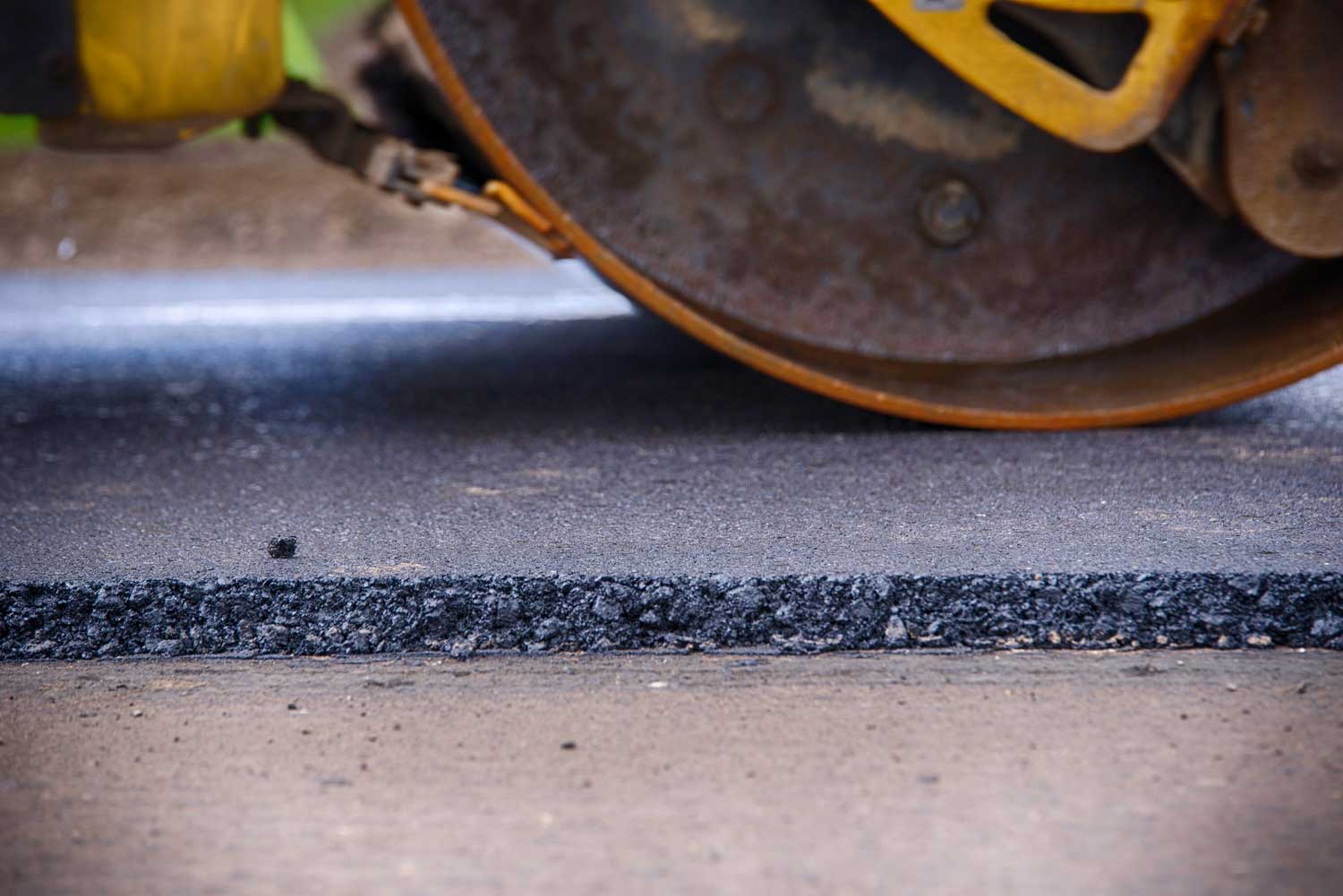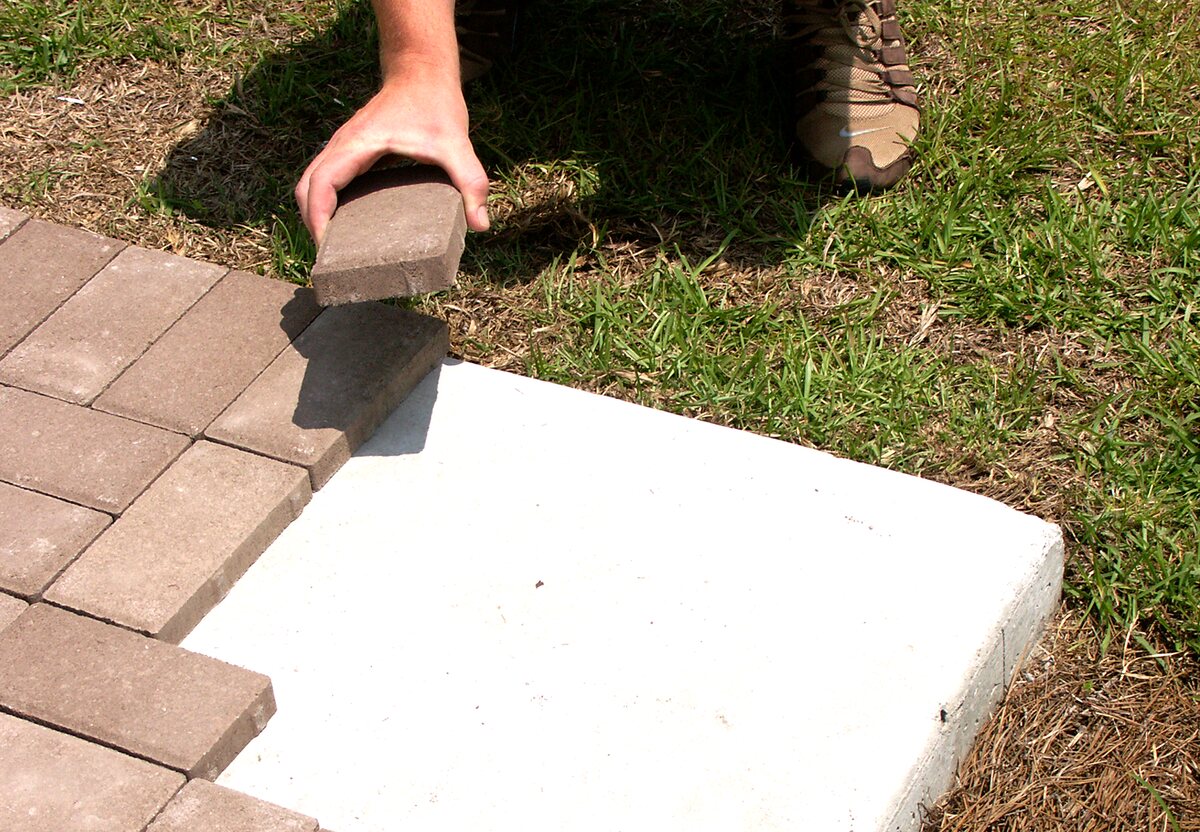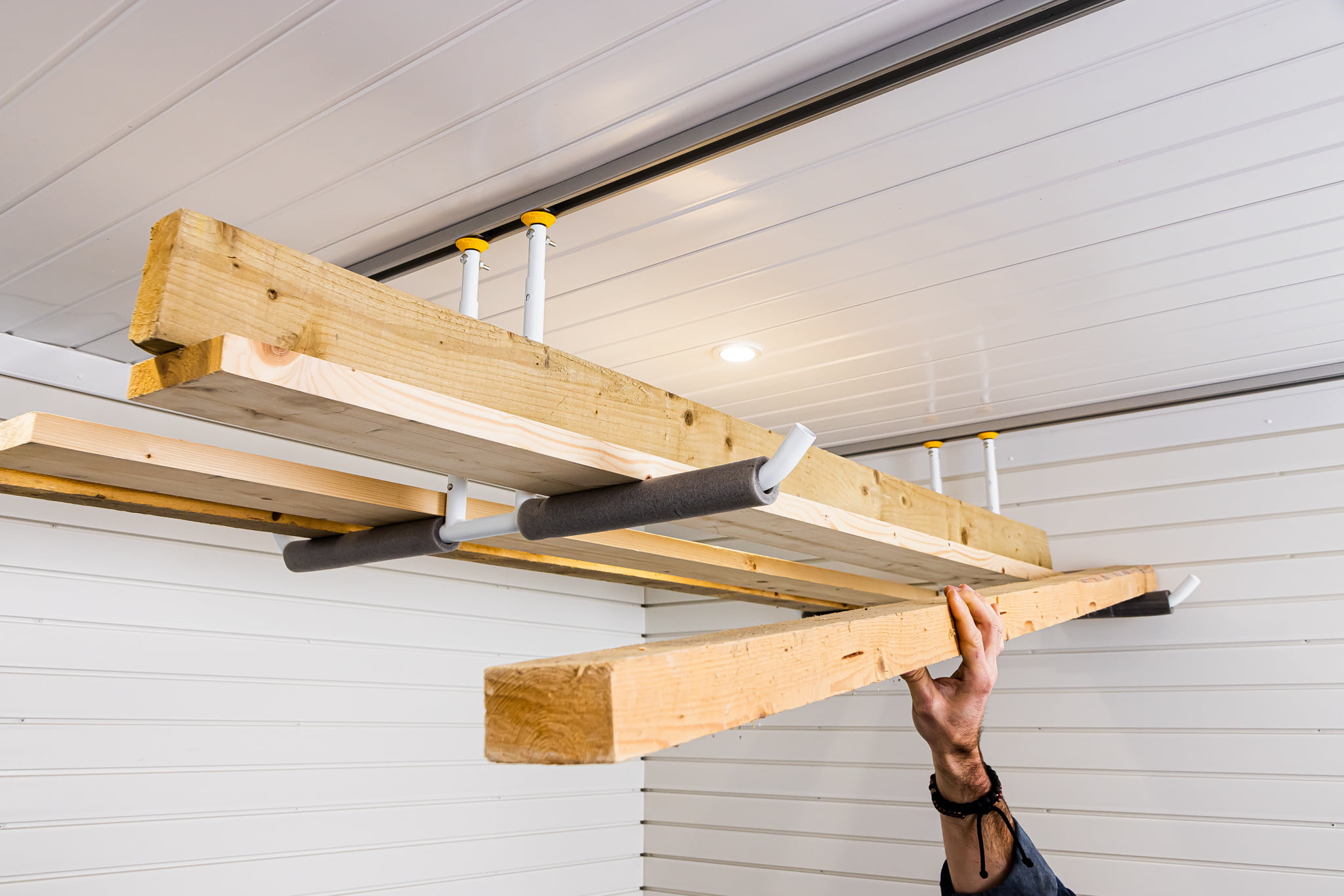

Articles
How Much Weight Can A House Floor Hold
Modified: August 24, 2024
Discover how much weight a house floor can hold with our informative articles. Gain insights and knowledge on floor load capacity and safety considerations.
(Many of the links in this article redirect to a specific reviewed product. Your purchase of these products through affiliate links helps to generate commission for Storables.com, at no extra cost. Learn more)
Introduction
When it comes to building or renovating a house, one crucial aspect that should never be overlooked is the weight capacity of the house floor. Understanding how much weight a floor can hold is essential for ensuring the safety and longevity of a home.
The weight capacity of a house floor refers to the maximum amount of weight it can support without causing structural damage or compromising the safety of the occupants. This weight includes not only the weight of the furniture and appliances but also the weight of the individuals living in the house.
There are several factors that determine the weight capacity of a house floor, including the construction materials used, the structural components of the floor, and the load-bearing capacity of different floor types. By understanding these factors, homeowners can make informed decisions about the weight distribution and ensure that their floors can support the anticipated loads.
In this article, we will explore these factors in detail, providing insights into the construction materials and techniques used, the structural components of house floors, and the load-bearing capacity of different floor types. Additionally, we will discuss how to calculate the maximum floor load capacity and offer safety considerations for dealing with overloaded floors. We will also provide tips on increasing the floor load capacity when necessary.
Understanding the weight capacity of house floors is crucial for maintaining the structural integrity of a home and ensuring the safety and comfort of its occupants. By becoming knowledgeable on this topic, homeowners can make informed decisions during construction or renovation projects and protect their investment in the long run.
Key Takeaways:
- Understanding the weight capacity of house floors is crucial for ensuring safety and longevity. Factors such as construction materials, structural components, and load-bearing capacity play a vital role in making informed decisions during construction or renovation projects.
- Overloading a floor beyond its weight capacity can lead to serious safety hazards and structural issues. It’s essential to be aware of signs of an overloaded floor and take necessary precautions to prevent potential accidents and damage.
Read more: How Much Weight Can Attic Hold
Factors that Determine Weight Capacity of House Floors
The weight capacity of a house floor is influenced by several factors that must be considered during the construction or renovation process. These factors play a crucial role in determining how much weight a floor can safely support. Let’s take a closer look at these factors:
- Construction Materials and Techniques: The materials used in the construction of the floor, such as concrete, wood, or steel, have different load-bearing capacities. Additionally, the techniques employed during construction, including the thickness and reinforcement of the floor, can greatly affect its weight capacity. It is essential to consult with professionals to ensure the appropriate materials and techniques are used for optimal weight support.
- Structural Components of House Floors: The structural components of the floor play a critical role in determining its weight capacity. Key components include beams, columns, and joists, which support the load applied to the floor. The size, spacing, and quality of these components must be carefully designed and implemented to ensure adequate weight distribution and support. Any compromises in these structural elements can significantly impact the weight capacity of the floor.
- Load-Bearing Capacity of Different Floor Types: Different types of floors have varying load-bearing capacities. For example, a concrete slab floor designed for heavy industrial use will have a higher weight capacity than a wooden floor in a residential building. It is essential to consider the intended use of the floor and select the appropriate floor type to meet the desired weight requirements.
It is important to note that these factors are interrelated and need to work together harmoniously to ensure the weight capacity of a house floor. Failure to consider any of these factors can result in structural issues and potential safety hazards.
When determining the weight capacity of a house floor, it is always recommended to consult with a structural engineer or an experienced contractor. These professionals have the expertise to assess the factors mentioned above and provide accurate information on the maximum weight capacity of the floor.
By taking into account the construction materials and techniques, the structural components of the floor, and the load-bearing capacity of different floor types, homeowners can ensure that their floors can safely support the anticipated loads. This proactive approach not only enhances the safety of the house but also prolongs the lifespan of the floor, providing peace of mind for homeowners.
Construction Materials and Techniques
Construction materials and techniques have a significant impact on the weight capacity of house floors. Choosing the right materials and employing proper construction techniques is crucial for ensuring the durability and stability of the floor. Let’s explore some key considerations regarding construction materials and techniques:
- Concrete: Concrete is one of the most commonly used materials in floor construction due to its strength and durability. The weight capacity of a concrete floor can be enhanced by increasing the thickness of the slab or incorporating reinforcements such as steel bars or mesh. The quality of the concrete mix and proper curing also play a vital role in ensuring the floor’s load-bearing capacity.
- Wood: Wood floors are popular in residential buildings due to their aesthetic appeal. However, they typically have lower weight capacities compared to concrete or steel floors. The weight capacity of a wood floor can be improved by selecting high-quality, dense wood species and ensuring proper installation techniques. Reinforcements such as joists or beams can be added to increase the floor’s load-bearing capacity.
- Steel: Steel is known for its high strength and load-bearing capacity, making it an excellent choice for floors in commercial and industrial buildings. Steel beams and girders provide exceptional support, allowing for larger spans and higher weight capacities. The design and installation of steel floors require expertise to ensure proper load distribution and stability.
- Reinforcements: Incorporating reinforcements in the form of steel bars, mesh, or fibers can significantly enhance the weight capacity of house floors. These reinforcements increase the tensile strength and overall structural integrity of the floor, allowing it to bear heavier loads. The placement and spacing of reinforcements should be carefully planned to optimize their effectiveness.
- Construction Techniques: The construction techniques employed during floor installation also impact its weight capacity. Properly leveling and compacting the subfloor, using adequate adhesives or fastening methods, and meticulously following installation guidelines contribute to a sturdy and reliable floor. It is essential to adhere to industry standards and consult with professionals to ensure the correct techniques are applied.
Ultimately, the choice of construction materials and techniques should be guided by the intended use of the floor and the anticipated loads it will bear. It is advisable to consult with architects, structural engineers, or experienced contractors to determine the most suitable materials and techniques for achieving the desired weight capacity.
By carefully considering construction materials, incorporating reinforcements, and applying proper construction techniques, homeowners can ensure that their house floors have a strong weight capacity. This not only enhances the safety and functionality of the space but also provides peace of mind for the occupants knowing that their floors can support the intended loads for years to come.
Structural Components of House Floors
The structural components of a house floor are the building blocks that provide support and stability, contributing to its weight capacity. Understanding these components is essential for assessing the floor’s load-bearing capacity and ensuring its long-term durability. Let’s take a closer look at the key structural components of house floors:
- Beams: Beams are horizontal structural elements that carry the load from the floor and transfer it to the columns or walls. They are designed to distribute the weight evenly and prevent excessive deflection or sagging. The material and size of the beams are determined based on the anticipated loads and span length. Reinforcing the beams with materials like steel can enhance their load-bearing capacity.
- Columns: Columns, also known as pillars or posts, are vertical structural elements that support the beams and transfer the weight to the foundation. They are vital for maintaining the structural integrity of the floor and preventing it from collapsing. The size, spacing, and material of the columns depend on the loads they need to bear and the design requirements.
- Joists: Joists are horizontal elements that span between beams or walls and support the floorboards or subfloor. They distribute the load evenly across the beams or walls and prevent excessive deflection. Joists can be made of wood, steel, or engineered products depending on the floor type and the anticipated loads. The spacing and size of the joists are determined by factors such as the span length and the expected loads.
- Girders: Girders are large beams that support other beams or joists in heavy-load areas, such as areas with concentrated weights or openings in the floor. Girders enhance the overall load-bearing capacity of the floor by providing additional support and redistributing the loads effectively.
- Connections: The connections between the structural components are critical for maintaining the floor’s stability and load-bearing capacity. Properly designed and secure connections ensure that the beams, columns, and joists work together as a unified system to withstand the anticipated loads. The connections can be achieved through fasteners, bolts, welding, or other suitable methods depending on the materials and design requirements.
It is important to note that the size, material, and spacing of these structural components are determined by factors such as the expected loads, the span length, and the building codes and regulations. Consulting with structural engineers or experienced contractors is crucial for designing and constructing the floor with the appropriate structural components to meet the desired weight capacity.
By understanding the role and significance of the structural components in house floors, homeowners and builders can ensure that the floors are built to withstand the intended loads. This not only enhances the safety and longevity of the house but also provides peace of mind for the occupants.
Load-Bearing Capacity of Different Floor Types
The load-bearing capacity of a floor largely depends on its type and the materials used in its construction. Different floor types have varying abilities to support weight and distribute loads. Understanding the load-bearing capacity of different floor types is crucial for selecting the most suitable option for a particular application. Let’s explore some common floor types and their load-bearing capacities:
- Concrete Slab Floors: Concrete slab floors are commonly used in both residential and commercial buildings. They are known for their high load-bearing capacity due to the strength of concrete. Reinforced concrete slabs can support heavy loads and distribute weight evenly, making them suitable for a range of applications, from residential homes to industrial warehouses.
- Wooden Joist Floors: Wooden joist floors, commonly found in residential buildings, have a moderate load-bearing capacity compared to concrete floors. The load-bearing capacity of wooden floors largely depends on the size, spacing, and quality of the joists. Additional support can be provided through reinforcements, such as adding more joists or using steel beams or girders.
- Steel Beam Floors: Steel beam floors are often used in commercial and industrial buildings where high load-bearing capacity is required. Steel beams have excellent strength and can withstand heavier loads than other floor types. They are commonly used in areas where large spans or heavy equipment are present, such as warehouses or manufacturing facilities.
- Raised Access Floors: Raised access floors are a specialized type of floor often used in office buildings and data centers. These floors consist of removable panels supported by an underlying grid system. While they may not have the same load-bearing capacity as concrete or steel floors, they have the advantage of providing easy access to cables, electrical components, and HVAC systems hidden beneath the floor.
- Tiled Floors: Tiled floors, such as ceramic or porcelain tiles, are commonly used in kitchens and bathrooms. While tiles themselves have a limited load-bearing capacity, the substrate or subfloor beneath the tiles determines the overall load-bearing capacity. A properly constructed and reinforced subfloor can ensure that tiled floors can support typical residential loads.
It’s important to note that the load-bearing capacity of a floor is not solely determined by its type but also by other factors such as the thickness of the floor, the quality of materials used, and the structural components supporting the floor. Consulting with architects, structural engineers, or experienced contractors is crucial for selecting the appropriate floor type that can meet the required weight capacity for a specific application.
By understanding the load-bearing capacity of different floor types, homeowners and builders can make informed choices when it comes to selecting the most suitable floor type for their needs. This not only ensures the safety and functionality of the space but also provides peace of mind knowing that the floor can handle the intended loads with ease.
Consider consulting a structural engineer to assess the load capacity of your house floor. Factors such as the type of construction, materials used, and any modifications made to the structure can affect its weight-bearing capacity.
Read more: How Much Weight Can A Ladder Hold
Calculating Maximum Floor Load Capacity
Calculating the maximum load capacity of a floor is a crucial step in ensuring its structural integrity and safety. It involves considering various factors such as the construction materials, structural components, and intended use of the floor. While it is recommended to consult with a structural engineer for accurate calculations, here are some general steps to help understand the process:
- Determine the Floor Area: Measure the length and width of the floor to determine the total floor area in square feet or square meters.
- Identify the Floor Type: Determine the specific type of floor you are working with, such as concrete slab, wooden joist, or steel beam.
- Consult Load Standards: Refer to local building codes, regulations, and load standards to understand the allowable load limits for the specific floor type and building occupancy. These standards provide guidelines for safe weight capacities based on factors such as floor materials, construction techniques, and anticipated loads.
- Consider Live and Dead Loads: Assess the live load and dead load that the floor will experience. Live loads refer to the dynamic loads caused by people, furniture, appliances, and other movable objects, while dead loads refer to the static loads from the weight of the floor itself, walls, and fixed components. These loads can be determined based on average weights or specific requirements for the intended use of the space.
- Calculate Load Distribution: Determine how the load will be distributed across the floor. This involves considering the spacing and arrangement of structural components, such as beams, columns, and joists, and their load-bearing capacities. Load distribution can affect the weight capacity of the floor, especially in areas with concentrated loads or openings.
- Factor in Safety Margins: It is important to include safety margins in the calculations to provide an extra level of protection. Safety factors may vary depending on local building codes and construction practices, but a common practice is to multiply the calculated load by a safety factor (typically around 1.5) to ensure the floor can handle unexpected variations or surges in load.
- Consult with a Structural Engineer: To accurately calculate the maximum floor load capacity, it is highly recommended to consult with a qualified structural engineer. They have the expertise to consider all relevant factors, perform detailed calculations, and provide specific recommendations based on your unique situation.
Calculating the maximum floor load capacity requires a thorough understanding of the factors mentioned above and adherence to applicable building codes and regulations. It is important to note that the calculations can vary depending on the specific circumstances, and professional guidance should be sought to ensure accurate and reliable results.
By accurately calculating the maximum floor load capacity, homeowners and builders can make informed decisions about the load distribution and weight requirements, ensuring the safety and durability of the floor. This proactive approach not only protects the investment in the property but also provides peace of mind for the occupants.
Safety Considerations for Overloaded Floors
Overloading a floor beyond its maximum weight capacity can lead to serious safety hazards and structural issues. It is essential to understand the potential consequences of placing excessive weight on a floor and take the necessary precautions to prevent overloading. Here are some safety considerations to keep in mind:
- Structural Integrity: Overloading a floor puts excessive stress on its structural components, such as beams, columns, and joists. This can lead to structural failure, including sagging, cracking, or even collapse. It is crucial to ensure that the floor is designed to handle the anticipated loads and that the structural components are in good condition and adequately reinforced.
- Occupant Safety: An overloaded floor not only compromises its own stability but also poses risks to the occupants. Increased deflection or sagging can cause uneven surfaces, making it more difficult to move around safely. It can also impact the stability of furniture and other objects on the floor, increasing the chances of accidents or injuries.
- Damage to Property: Overloading a floor can result in damage to the floor itself, as well as other components of the building. Excessive weight may cause the floor to crack, warp, or deteriorate over time. It can also lead to damage to walls, ceilings, or other structural elements as the load is transferred to them beyond their intended capacity.
- Fire Safety: Overloaded floors can also impact fire safety measures. Excess weight may impede evacuation paths or hinder the effectiveness of fire protection systems, such as sprinklers or fire alarms. It is important to ensure that the floor’s load capacity is not compromised to maintain proper fire safety protocols.
- Maintaining Warranty: Overloading a floor may violate the warranty provided by the manufacturer or the contractor. It is crucial to adhere to the weight limits specified in the warranty documentation to avoid potential issues with warranty claims and ensure compliance with warranty terms and conditions.
To mitigate the risks associated with overloaded floors, it is essential to adhere to the recommended weight limits and follow proper load distribution practices. Consulting with structural engineers or experienced contractors can provide guidance on appropriate weight capacities and help determine the best course of action in case of anticipated heavy loads.
If you suspect that a floor may be overloaded, there are signs to watch out for, such as excessive creaking or squeaking, noticeable sagging or unevenness, or cracks in the flooring or walls. If any of these signs are present, it is crucial to address the issue promptly by reducing the load, reinforcing the floor, or seeking professional advice to prevent further damage or potential accidents.
Ensuring the safety of floors by avoiding overloading is essential for maintaining the structural integrity of the building and providing a secure environment for occupants. By being mindful of weight limits, conducting regular inspections, and seeking professional assistance when needed, homeowners can prevent dangerous situations and prolong the lifespan of their floors.
Signs of Overloaded Floors
Overloading a floor can put excessive stress on its structural components, compromising its integrity and safety. It is crucial to be aware of the signs that indicate a floor may be overloaded to take necessary action and prevent further damage or potential accidents. Here are some common signs to watch out for:
- Sagging or Unevenness: One of the most noticeable signs of an overloaded floor is sagging or an uneven surface. Excessive weight can cause beams or joists to deflect, resulting in a noticeable dip or unevenness in the floor. This is particularly evident in areas where heavy objects are placed or where the concentration of weight is higher.
- Creaking or Squeaking: Overloaded floors may produce creaking or squeaking sounds as the structural components struggle to support the weight. These noises can occur when walking or placing objects on the floor. If the creaking or squeaking sounds are new or have become more frequent and pronounced, it may indicate an overloaded floor.
- Cracks in the Flooring or Walls: Overloading can cause visible cracks in the flooring materials, such as tiles or hardwood, as well as in the walls or nearby structural elements. These cracks can be hairline cracks or more significant fractures, depending on the extent of the overload and the materials used. It is important to investigate the cause of the cracks, as they may indicate an overloaded floor.
- Doors and Windows Sticking: Overloaded floors can lead to the misalignment of doors and windows. If you notice that doors or windows are becoming harder to open or close, or if they no longer operate smoothly, it could be a sign that the floor is under excessive load, causing the frame to warp or settle.
- Inadequate Load Distribution: If heavy objects or furniture on the floor are causing visible indentations or imprints on the flooring material, it may indicate that the load is not adequately distributed. This can put unnecessary stress on specific areas of the floor, compromising its overall integrity and potentially leading to further damage.
If you observe any of these signs, it is essential to address the issue promptly. Overloaded floors can pose safety risks and lead to further structural damage if left unattended. Here are some steps you can take in response to signs of an overloaded floor:
- Reduce the Load: Remove or redistribute excessive weight from the floor. This may involve relocating heavy objects or furniture to other areas of the room or the building.
- Strengthen the Floor: Consult with a structural engineer or experienced contractor to determine if additional reinforcement, such as adding support beams or joists, is necessary to increase the floor’s load-bearing capacity.
- Seek Professional Advice: If you are unsure about the cause of the signs or the appropriate course of action, it is advisable to seek guidance from professionals who can assess the situation, conduct a thorough inspection, and provide accurate recommendations.
By being vigilant and attentive to the signs of an overloaded floor, homeowners can take proactive measures to address the issue and prevent potential safety hazards. Regular inspections, adherence to weight limits, and seeking professional assistance when needed are essential for maintaining the structural integrity and safety of house floors.
Increasing Floor Load Capacity
If you find that your floor is not meeting the required load capacity for your needs, there are several measures you can take to increase its load-bearing capacity. These solutions can help strengthen the floor and ensure it can safely support heavier loads. Here are some effective ways to increase the floor load capacity:
- Add Additional Support: One of the most common methods to enhance floor load capacity is by adding additional support. This can be achieved by installing additional beams, columns, joists, or girders to better distribute the weight. Consulting with a structural engineer is crucial to determine the appropriate placement and size of the added supports to effectively increase the load capacity.
- Reinforce Existing Structural Components: Strengthening the existing structural components of the floor can also help increase its load capacity. This may involve adding reinforcement materials such as steel plates, steel bars, or additional layers of plywood to the existing joists or beams. Reinforcements can enhance the floor’s ability to handle heavier loads and prevent excessive deflection or sagging.
- Use Stronger Materials: Another approach to increase the floor load capacity is to use stronger and more robust materials during the construction or renovation process. For example, using higher-grade concrete, larger dimension lumber for wooden floors, or structural steel elements can significantly enhance the floor’s load-bearing capacity. It is important to consult with professionals to ensure the materials chosen are compatible with the existing structure and meet the necessary load requirements.
- Improve the Subfloor: The subfloor, which is the layer beneath the visible flooring material, plays a crucial role in supporting the load of the floor. Strengthening the subfloor by adding layers of plywood or using thicker and more rigid subfloor materials can greatly enhance the overall load capacity of the floor. Again, consulting with professionals is recommended for proper subfloor reinforcement techniques.
- Consider Floor Reinforcement Systems: There are specialized floor reinforcement systems available that can be installed to enhance the load capacity of an existing floor. These systems usually involve the use of carbon fiber or steel strips that are bonded to the floor surface and provide additional strength and support. These reinforcement systems can be a valuable solution for increasing the load capacity without major structural modifications.
Before implementing any measures to increase the floor load capacity, it is essential to consult with a structural engineer or an experienced contractor. They can evaluate the existing floor structure, assess the load requirements, and provide specific guidance on the appropriate techniques and materials to use.
It is important to approach floor load capacity increase with caution, as modifying the structure without professional advice can lead to further issues or compromise the safety of the floor. Working with qualified professionals ensures that the modifications are done correctly and in compliance with building codes and regulations.
By taking the necessary steps to increase the load capacity of your floor, you can accommodate heavier loads and ensure the safety and functionality of your space. Whether through additional support, reinforcement, material upgrades, or specialized systems, these solutions can help you achieve a floor that meets your specific load requirements.
Read more: How Much Weight Can EMT Conduit Hold
Conclusion
Understanding the weight capacity of house floors is a critical aspect of any construction or renovation project. It ensures the safety, stability, and longevity of the building, providing a secure environment for occupants and protecting their investment. By considering the factors that determine weight capacity, such as construction materials, structural components, and load-bearing capacity of different floor types, homeowners and builders can make informed decisions and select the most suitable options for their needs.
Construction materials and techniques play a significant role in determining the weight capacity of a house floor. Concrete, wood, and steel are commonly used materials, each with its own load-bearing capacities. The proper selection and use of these materials, along with appropriate construction techniques, are essential for achieving the desired weight capacity.
The structural components of house floors, including beams, columns, and joists, are responsible for supporting and distributing the weight. It is crucial to ensure that these components are properly sized, spaced, and reinforced to handle the anticipated loads. By understanding the role of these components, homeowners can assess the load-bearing capacity of their floors more effectively.
The load-bearing capacity of different floor types varies depending on the materials and construction. Concrete slab floors offer high weight capacity, while wooden joist floors have a moderate capacity. Steel beam floors are known for their strength and durability, making them suitable for heavy-load applications. It is important to select the appropriate floor type based on the intended use and anticipated loads.
Calculating the maximum floor load capacity involves considering factors such as the floor area, load type, and load distribution. While it is recommended to consult with a structural engineer for accurate calculations, homeowners can gain insights into the process and ensure compliance with the recommended weight limits and safety standards.
Overloading a floor beyond its weight capacity can lead to safety hazards and structural issues. Understanding the signs of an overloaded floor, such as sagging, creaking, cracks, or sticking doors and windows, is essential for taking prompt action. Addressing an overloaded floor involves reducing the load, reinforcing the floor, and seeking professional advice when needed.
In cases where the floor does not meet the required load capacity, measures can be taken to increase its load-bearing capacity. This may involve adding additional support, reinforcing structural components, using stronger materials, improving the subfloor, or considering specialized reinforcement systems. Professional guidance is essential to ensure the modifications are appropriate and comply with building codes and regulations.
In conclusion, understanding the weight capacity of house floors is crucial for maintaining a safe and durable living environment. By considering the construction materials, structural components, and load-bearing capacity, homeowners and builders can make informed decisions, prevent overloading, and ensure a secure and functional space for years to come.
Frequently Asked Questions about How Much Weight Can A House Floor Hold
Was this page helpful?
At Storables.com, we guarantee accurate and reliable information. Our content, validated by Expert Board Contributors, is crafted following stringent Editorial Policies. We're committed to providing you with well-researched, expert-backed insights for all your informational needs.














0 thoughts on “How Much Weight Can A House Floor Hold”